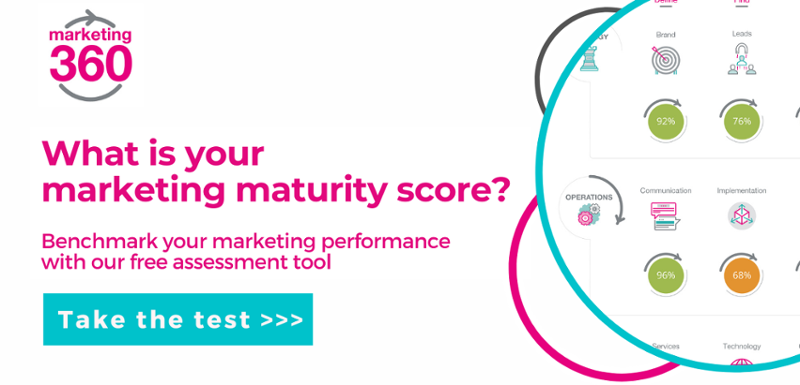Without meaningful goals, it’s impossible to know if your marketing is performing.
Goals give everyone clarity about what they need to do and benchmarks against which you can measure performance.
Ultimately, goals drive performance. In this piece, we’ll look at how to set meaningful goals for every stage of the customer journey, so you measure and improve your marketing performance.
Start with your business strategy
You need to be sure that your marketing goals are linked to your wider business objectives. Without this, how can marketing help you get your business to where you want it to be?Consider:
- What customer segments do you want to target?
- What products/services will these segments be most interested in?
- How will marketing help you reach new customers and shorten the sales process?
Once you understand your wider business objectives, you’ll be able to see how marketing can contribute. But make sure you’re clear about which elements of your business objectives marketing are accountable for.
It’s worth noting that management metrics relating to marketing - return on marketing investment, cost per acquisition, lifetime value - should be separate from day-to-day
marketing metrics, like new leads and the number of new leads and how many have qualified to SQL.
Get your team’s input
Once you’ve set your business goals, the next step is to discuss what you’re doing with your marketing team. This will ensure that they understand and buy into the goals you have set, and that they can give their own input.
This step is important. If your team has contributed to their own goals, they’ll be more likely to work hard to hit them.
After you’ve set your goals (we’ll get into more detail on this below), make time for regular reviews of your team’s performance. Dashboards can help make this easier. Regular catch-ups to review performance will embed your goals into your marketing team’s culture.
You want to set specific goals for each step of the customer journey. This will ensure you’re marketing team is adding value throughout the entire marketing and sales process and not focusing on certain areas at the expense of others.5 quickfire exercises to improve every aspect of your lead generation
Everything you need to know to generate more leads.
Get our Lead Gen in 10 workbook today.
It can be helpful to think about the customer journey in terms of a funnel:
- Top of funnel - building awareness within your target market
- Middle of funnel - converting that awareness into leads and nurturing those opportunities
- Bottom of funnel - passing opportunities to sales and closing them
While it might feel intuitive to set goals in the same order that the customer will progress through the funnel - from the top down - it’s best to start at the bottom and work up. This way you can start with your sales targets and work backwards to understand the leads, traffic and awareness you’ll need to get there.
If you’re unsure, this exercise will help you calculate how many leads you need overall to hit your revenue targets.
Bottom of funnel goals
The bottom of the funnel is, essentially, where sales happen. The key focus here is the volume, value and velocity of the sales opportunities and how many of them close.
Key questions to ask:
- How many leads generated by marketing are closing?
- How long does the sales process take?
- What’s the average deal value?
Note: start by benchmarking current performance. Then you will be able to create more credible ‘stretch goals’ for the future.
Middle of funnel goals
This set of goals covers how successfully you’re engaging buyers and converting their interest into new contacts, enquiries and leads.
Key questions to ask:
- How many leads or contacts are being generated?
- How many new enquiries are we getting?
- What proportion of our traffic is converting into leads, orders or enquiries?
Top of funnel goals
Your top of funnel goals should focus on whether you are generating enough awareness and traffic to get the number of leads you need to hit your middle and bottom of funnel goals.
Key questions to ask:
- Are you getting enough traffic to your website?
- Are you reaching your target market where they are, ie. on social media or in their inbox?
- Are you building brand awareness with enough of your market?
Something is always better than nothing
Some sales and marketing teams shy away from setting hard-and-fast goals because they’re not sure ‘what good looks like’ or what numbers to choose.
Don’t fall into this trap. Set specific, measurable, numerical goals. They may turn out to be wrong, but they’ll get you started and you can iterate from there.
As we mentioned earlier, goals drive performance. Setting clear, measurable goals and helping your team to work towards them is a proven way to increase the performance and ROI of your marketing.




-1.png?width=800&height=500&name=Expert%20View%20(1)-1.png)
